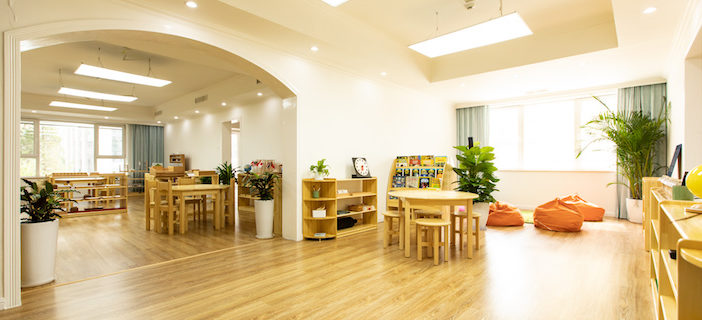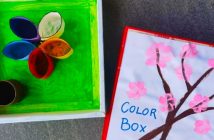At the turn of the 20th century, Dr. Maria Montessori became Italy’s first female physician. During her career as a doctor, she was intrigued by her observations of children and decided to develop a child-centered educational approach devoted to fostering the growth of the whole child: the Montessori Method.
Her new method was firmly rooted in the belief that all children naturally want to learn and, given the right environment and opportunities, can teach themselves. In 1907, she started the first Montessori school, shifting the focus from direct instruction, strict disciplinary practices, teacher-controlled classrooms, and the grading system to simply providing a carefully prepared environment and giving children well-designed tools so they can explore any number of topics on their own. With gentle guidance from their teacher, children were allowed to learn at their own pace and to cultivate their natural love of learning in a non-competitive environment.
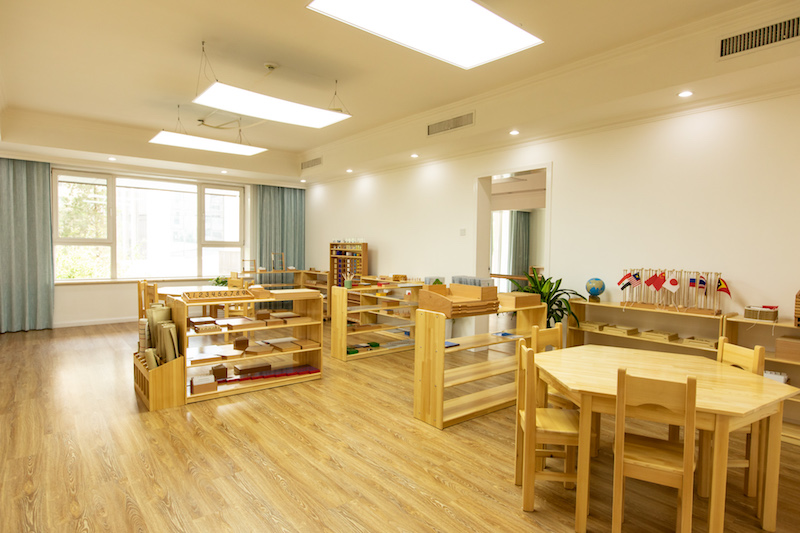
Blossom Montessori’s modern facilities are designed for students aged 6-12 years
Over the years, numerous studies have shown that this method produces more creative, confident and socially adept children. As a result, the Montessori philosophy has made its way across the globe and has now become a hot topic in the world of preschools in Beijing. Montessori centers are mushrooming across the city with wonderful programs that help toddlers of up to six years discover themselves, create their language, coordinate their movement, orient themselves in their physical space, take on their own intelligence and personalities. However, for parents, tough questions loom as their children turn older and it is time for them to start attending regular elementary school: will their child be able to transition smoothly into another model?
Long-time Beijing resident and educator Alessia Chizzoniti has strongly believed in the Montessori system since her own schooling days in Italy. Her solution was to establish Blossom Montessori, a bilingual education and culture center for 6-12-year-olds. “It’s one step in the direction of my dream, which is to see the Montessori philosophy being embraced fully at even the high school level”, she says.
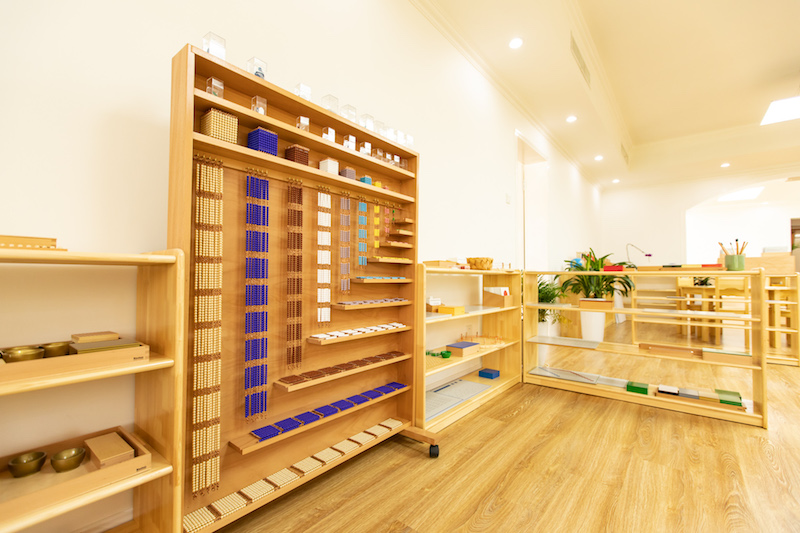
Blossom Montessori’s facilities encourage students to explore and expand their thirst for knowledge
“Many people are under the impression that Montessori schools are only for preschool-aged children, but a large part of Maria Montessori’s approach was based on her work with older kids,” explains Alessia. One of Montessori’s many profound discoveries was what she called “Planes of Development”. She observed that all children experience six-year planes or cycles of growth, each with its own developmental goals and unique characteristics, to which the educational content must be customized.
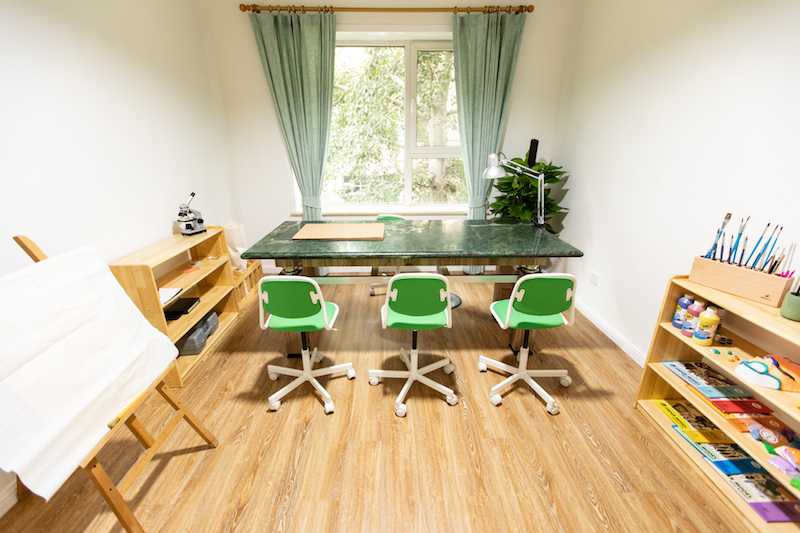
A workspace at Blossom Montessori
Children in the Second Plane (6-12 years) are characterized by a thirst for knowledge and a powerful imagination. The elementary program at Blossom takes advantage of this period of curiosity by providing a wide range of opportunities for children to explore languages, history, geography, arts, arithmetic, and sciences. The fully bilingual curriculum is an integrated approach to the different subject areas. Study materials are provided and students are able to pick what they would like to learn about within the environment set-up by the teacher. “The freely flowing multi-age classroom is an excellent way to enhance social and interpersonal skills,” says Alessia, highlighting another key aspect of the Montessori model. “They [the children]like to work in groups sometimes and the older children are always happy to act as mentors and help the younger kids!” To this effect, the classroom is designed for collaborative learning with special spaces such as the ‘Peace Corner’ for quiet reflection.
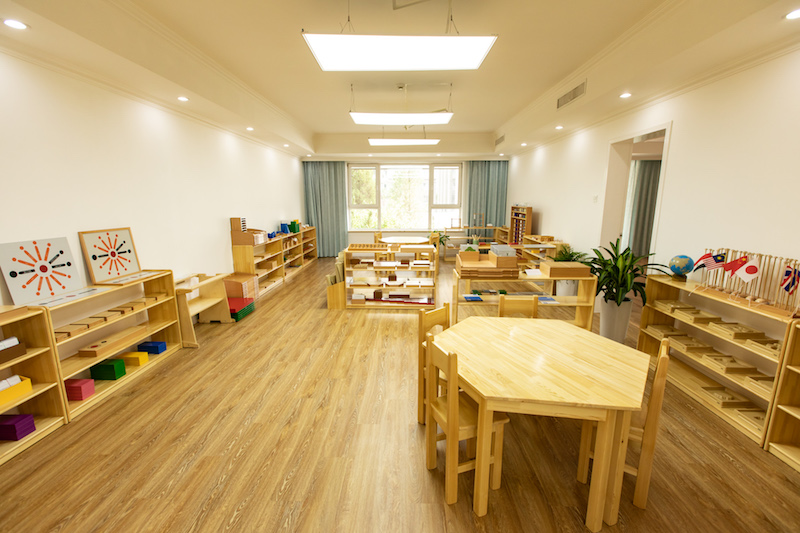
Free flowing, multi-age classrooms encourage learning and sharing
Alessia then mentions that the key to an authentic Montessori experience is observation. “While most of the learning is self-directed, the teachers are experts at constantly observing and altering environments so that each individual child gains maximum benefit from his or her chosen activity”, she says, pinpointing the importance of individual attention to each child.
As per Montessori’s findings, 6-12 years is also an age when children are fascinated by concepts of justice and fairness. “It is especially important for their guides to be excellent role models during this period and create an environment where everyone respects each other”, Alessia emphasizes, giving examples of how children learn to negotiate and discuss rather than quarrel. “Usually, the Montessori is a calm place, unless of course its gym or games time!” she jokes.
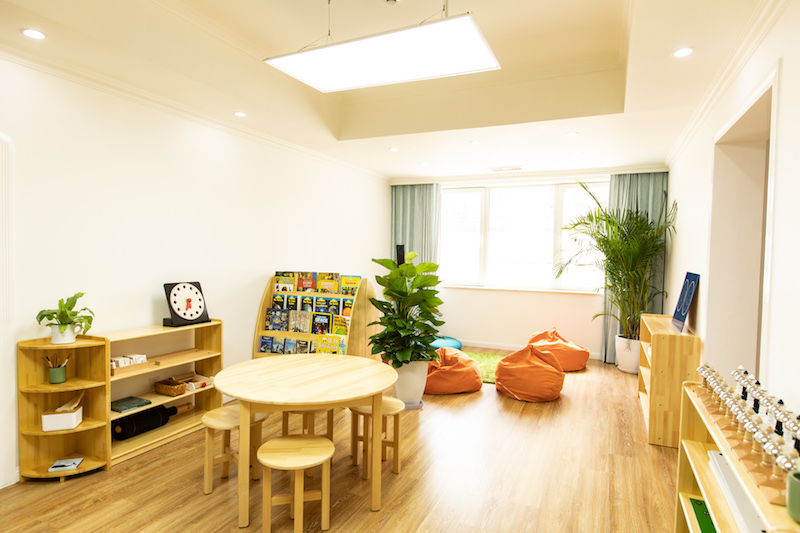
Spaces at Blossom Montessori encourage the 4C’s: critical thinking, collaboration, creativity, and communication
When asked how Montessori methods have evolved to stay relevant, Alessia talks about the 4C’s: critical thinking, collaboration, creativity, and communication. These ideas have been central to the Montessori philosophy since the very beginning. “In fact, mainstream schools are now evolving to include these 21st-century skills,” she says. Looking to the future, she explains that at the heart of the Montessori philosophy is a desire to learn and explore, not for the sake of going to the next level but simply for the joy of discovery and life-long learning.
All-in-all, the bilingual elementary curriculum at Blossom takes into account this imaginative age and gently introduces the children to various academic concepts. It also facilitates the development of character and an ‘inner voice’, by helping them carry out their own social and moral explorations. Like Maria Montessori, Alessia places great emphasis on the cultivation of each child’s ‘inner voice’. It is this individual inner voice that may ultimately help pave the way to a more peaceful world, she concludes.
This post is paid for my Blossom Montessori
Photos: Uni You

